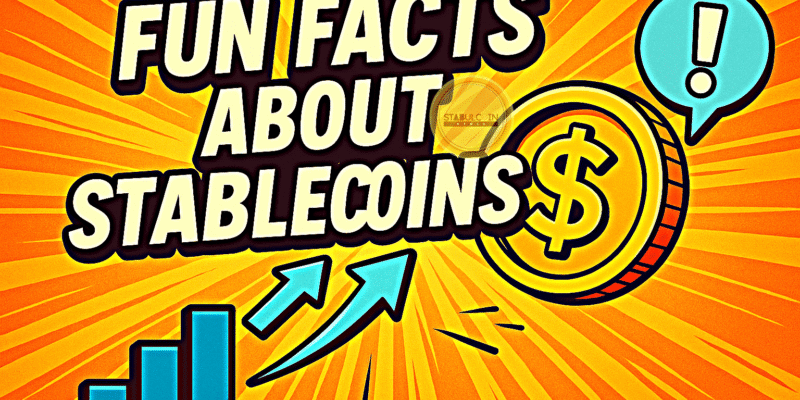Fun Facts About Stablecoins You Probably Didn’t Know
Stablecoins are a fascinating bridge between traditional finance and blockchain technology. Pegged to stable assets like the U.S. dollar or gold, they provide the benefits of crypto without the wild price swings. Whether you’re new to digital currencies or a seasoned investor, here are some fun facts about stablecoins that might surprise you.
The First Stablecoin Dates Back to 2014
While stablecoins dominate headlines today, the first widely used example, Tether (USDT), launched in 2014. It pioneered the idea of pegging a cryptocurrency to a fiat currency, creating a foundation for the industry’s explosive growth.
Over 200 Stablecoins Exist Worldwide
From the U.S. dollar to the euro and even gold, there are now more than 200 active stablecoins across the globe. Some are fiatbacked, others are backed by commodities, and a few are algorithmic, using smart contracts to maintain price stability.
Not All Are Backed by Cash
Popular options like Pax Gold (PAXG) are backed by physical gold stored in vaults. Others, like DAI, use crypto collateral and algorithms to keep their value stable. This diversity allows stablecoins to serve different markets and needs.
Stablecoins Handle Billions in Transactions Daily
Blockchain analytics show that stablecoins often outpace even Bitcoin and Ethereum in daily transaction volume. Businesses use them for payroll, remittances, and crossborder ecommerce because they settle fast and avoid the volatility of other cryptocurrencies.
They’re Heavily Watched by Regulators
Given their role in global payments, stablecoins are under close scrutiny. Regions like the EU and Hong Kong have rolled out specific licensing rules, and the U.S. is actively debating stablecoin legislation.
Ripple Joins the Stablecoin Race
In 2024, Ripple launched Ripple USD (RLUSD), a fully USDbacked stablecoin pegged 1:1 to the U.S. dollar. Backed by cash and U.S. Treasuries and issued under a New York trust charter, RLUSD combines regulatory compliance with blockchain efficiency. Its integration into Ripple’s payment network gives startups and enterprises a trusted way to transact globally with both speed and stability.
They’re More Than Just a Trading Tool
While traders rely on stablecoins to hedge against volatility, realworld adoption is accelerating. From settling freelance payments in Africa to enabling crossborder supply chain settlements, stablecoins are proving their value beyond crypto exchanges.
Key Takeaway
Stablecoins have evolved from a niche experiment into a critical pillar of the digital economy. Whether backed by dollars, gold, or algorithms, they’re redefining how money moves. And with innovations like Ripple’s RLUSD, the future looks both stable and fastmoving.

Comments